The two drivers who performed with the first test of IndyCar’s definitive Aeroscreen this week said the new safety structure is ready for introduction.
Penske driver Will Power and Ganassi’s Scott Dixon covered almost 1,000 kilometres of running between them using cars fitted with the new screen at Indianapolis Motor Speedway. The screen was created by Red Bull Advanced Technologies and is based on a concept they created for F1 three years ago before it adopted the Halo.The screen is intended to improve head protection for drivers following a series of major crashes. In 2015 Justin Wilson was killed at Pocono when he was struck by a piece of debris.
Speaking after the test Power said “you could race this weekend, no problem – you could do that, that wouldn’t be an issue.
“That shows what good of a job they’ve done just bolting it straight on. That’s what you get when you work with the best people in the game like Red Bull Technologies and obviously IndyCar, as well, and all the partners involved. You get a product like this, which is pretty seamless, you know, straight in.”
Both drivers admitted the new structure means it takes longer to get in and out of the car. However they said the device, which unlike F1’s Halo includes a screen, does not add as much drag as was predicted. “Once you found the right configuration on top, actually the downforce and drag was pretty close,” said Power.
However he suspects the screen will make cars more sensitive to wind. “You do feel gusts of wind a little more,” he said. “We haven’t had like a terribly gusty day, but I feel like it may have affected the car a bit more.”
Advert | Become a RaceFans supporter and
Power said the extra weight added by the screen “makes the car more forgiving” in terms of its weight distribution.
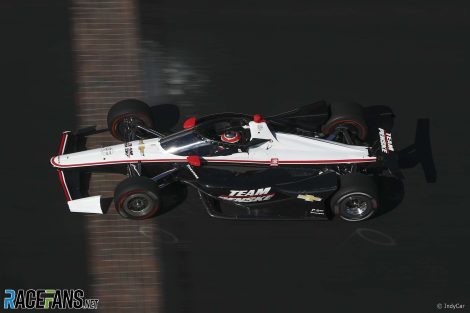
“With a few adjustments it worked pretty well. I felt over the whole stint there was a pretty good balance. They really didn’t feel that different to what we had, it’s just a bit more forgiving now because you’ve got more weight up in front.”
Dixon said another side effect of the Aeroscreen is the cockpit is now “super quiet.”
“Compared to just having your head exposed and all that wind and all the noise, it’s almost like you’re in a road car driving around. It’s extremely quiet. You hear the engine a lot more. It’s kind of weird actually. It felt very odd.”
“I can hear my radio for a change,” he added. “Normally I can’t hear that.”
Three further tests of the Aeroscreen are planned before the end of the year. Penske’s Simon Pagenaud and Andretti’s Ryan Hunter-Reay will driver at the Barber Motorsport Park road course on October 7th. A further oval test will take place at Richmond, which is returning to the IndyCar calendar next year, with Dixon and Penske’s Josef Newgarden on October 15th. After that Schmidt’s James Hinchcliffe and Coyne’s Sebastien Bourdais will run the Aeroscreen at the Sebring road course on November 5th.
IndyCar Aeroscreen test
Advert | Become a RaceFans supporter and
IndyCar
- IndyCar’s packed pit lanes “a good problem to have” with 29-car field
- How to watch the Chinese GP, IndyCar at Long Beach and WEC at Imola
- Prema announce move into IndyCar with new two-car team in 2025
- Palou dominates IndyCar’s Thermal Club $1 Million Challenge
- Rosenqvist controls heat one but Palou takes pole for final in heat two




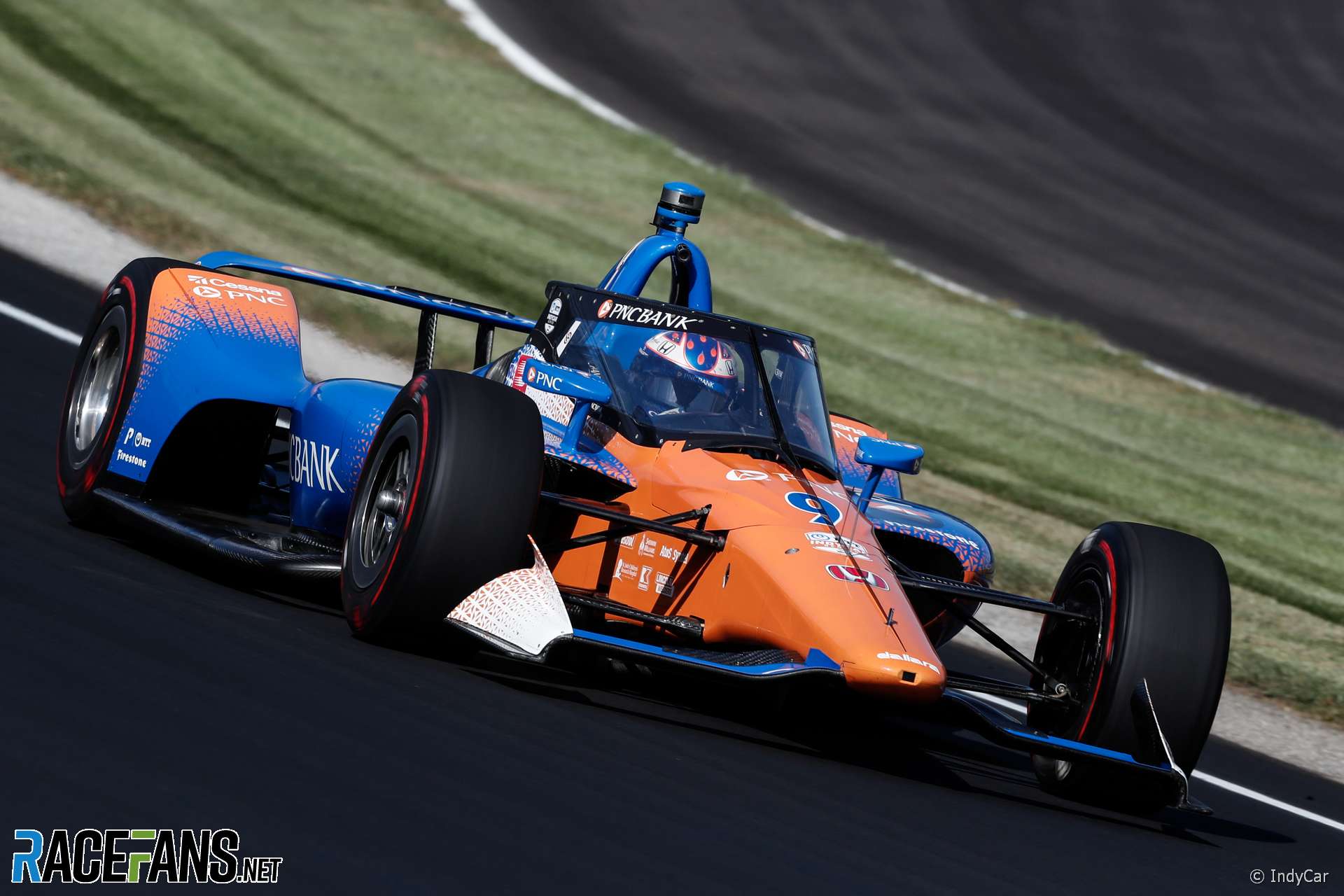
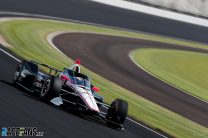
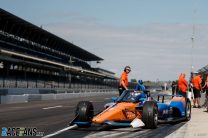
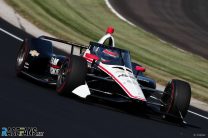
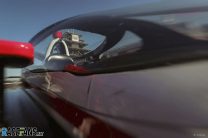
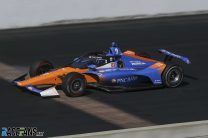
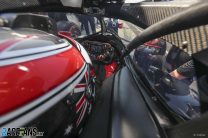
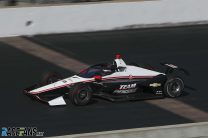
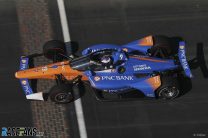
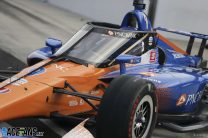
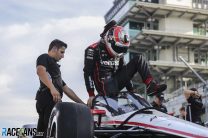
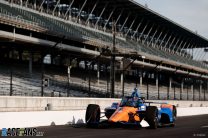
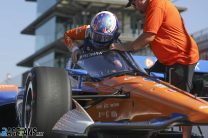
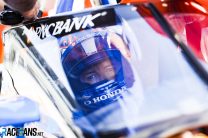
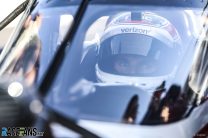
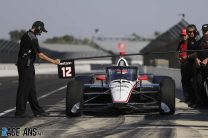
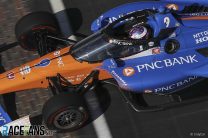
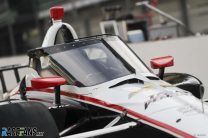
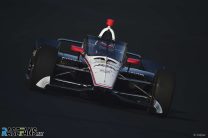
Nitzo (@webtel)
3rd October 2019, 7:33
I would like to if they have done some research whether the extra time taken to get out could be a hassle in case of an emergency. Although, it is bound to reduce once the drivers get used to it.
Maybe they can have a removable aeroscreen which enables to driver to go ahead and remove it in times of need; like how the cockpit headrest in F1 is fastened.
BasCB (@bascb)
3rd October 2019, 10:27
I am sure they did – after all they have done a lot of research on the introduction, they also have a lot of data from F1 with the halo to take as a basis etc.
A removeable Halo/Screen would go against the purpose of it – it would weaken it.
Nitzo (@webtel)
3rd October 2019, 13:11
@bascb
I agree on the fact that it would weaken the structure if its made removable–a potential safety hazard. But in case getting out of the cockpit is taking longer then perhaps they can resort to such a measure was my idea.
Nevertheless, Is there a documented version or a news report of such a research ?? Just asking out of curiosity.
UNeedAFinn2Win (@uneedafinn2win)
3rd October 2019, 14:05
It’s removable. AMR safety team was / is testing extraction at IMS during this and the coming tests, and were a part of the design process.
BasCB (@bascb)
4th October 2019, 9:04
makes sense that since they now have the test version ready, they’d also test extraction (times) as part of finalizing the design and giving it a (potential) go ahead.
There were several articles about extraction times / testing them with the Halo @webtel, I think you can find most of that by searching this site for the halo.
Chaitanya
3rd October 2019, 7:34
That screen looks much better than Halo especially for flying debris.
ColdFly (@)
3rd October 2019, 11:42
IMO it looks hideous Chaitanya.
Just got up from my bare knees thanking FIA that they chose the Halo for F1-3.
GeeMac (@geemac)
3rd October 2019, 12:34
Yeah agreed. Initially I supported the idea of a screen, but this doesn’t suit the DW12 at all.
Nathan Builder (@nathanbuilder)
3rd October 2019, 18:51
Well, the Areoscreen also has a halo on the inside :P
Pat Ruadh (@fullcoursecaution)
3rd October 2019, 13:10
I think it looks waaaaaaay better @coldfly. Eye of the beholder I guess.
If they refine it so that there is less of a kink from the chassis to the screen it would look very neatly integrated and racey.
Down on my bare knees hoping FIA are thinking of adopting this instead
spoutnik (@spoutnik)
3rd October 2019, 12:14
I find it really ugly and disproportionate. But I guess I’ll get used to it and they will refine it so it’s no big deal.
… Fortunately, I don’t watch Indy ;) (ok, maybe Indy 500 until Alonso eventually wins it)
socksolid (@socksolid)
3rd October 2019, 12:51
Same thing for me. It ruins the proportions of the car and looks really crude. Which would be fine if it can save lives but I’m not so confident about that either.
UNeedAFinn2Win (@uneedafinn2win)
3rd October 2019, 14:09
There is no refining, this is the Hero product, that is to say the production model. Dallara will deliver some fairings to the teams to help direct airflow inside the cockpit but that’s it.
Bob R21
10th October 2019, 19:21
This is a true insult to the Indy car program! after years and years of progress this???
they will turn off more fans and potential fans with this UGLY piece of equipment! with all the technology this is the best they can come up with and mandate it – really you guys are better than this?
This looks like a mud track racer hey lets put a giant fin on the top too and really look a clown!
I’m going to have a hard time attending races in 2020, this is truly a step back!
Sorry Red Bull.
Steven Robertson (@emu55)
3rd October 2019, 8:13
Daft question, but does it have wipers for wet races?
Lenny (@leonardodicappucino)
3rd October 2019, 8:57
I believe IndyCar doesn’t race in the wet, so it’s not much of a problem
Keith Collantine (@keithcollantine)
3rd October 2019, 9:12
@leonardodicappucino IndyCar doesn’t race in the wet on ovals, which account for five of the 17 races on next year’s calendar, but they do race in the wet on the road and street courses which form the rest of the calendar.
This year’s races in Detroit and on the Indianapolis road course were affected by rain.
Andy (@andycz)
3rd October 2019, 9:34
@keithcollantine Maybe a bit odd question but I do not follow Indy closely – are those cars same for ovals and normal race tracks? Are they going to use Aeroscreen on normal racetracks as well?
EB (@ebchicago)
3rd October 2019, 11:05
I can answer, same car, they use a different aero package for the super speedways (large ovals). They will have this for all races. I’m not sure they have a full solution for rain yet. They will use a coating that sheds water and I’ve heard they are considering large tearoffs but no wiper system. That will probably be enough, they run in the wet but once there is is too much rain they red flag the races just like f1. They don’t run in downpours or with standing water in the track.
Andy (@andycz)
3rd October 2019, 11:22
Thanks EB!
Phylyp (@phylyp)
3rd October 2019, 12:55
@ebchicago – apart from the aero, don’t they also have other smaller chassis differences? Most notably a steering rack that is biased to one side for the ovals, and a regular (balanced/unbiased) rack for road/street tracks. I’m not sure if the suspension is similarly biased on the ovals, but I do recall reading it about the steering rack.
grat
4th October 2019, 0:29
They’re the same car in that they’re both modified Dallara DW12’s, but they have different engine specs (boost level from the turbo, primarily), different aero packages, and I’m not sure the weight jacker is used on the street courses.
From interviews, it sounds like each driver has two cars– either can be converted to the other spec, but it takes time.
Don
3rd October 2019, 14:29
You really don’t know that 2/3’s of IndyCar’s schedule are on road and street courses?
From the views above the screen it looks like it has a nice curve to it. Straight from the front it looks flat and square on top. I can’t figure out if this is an optical illusion or what? The screen looks a bit different (better) in video also. One thing is certain, this offfers much more protection than just the Halo.
Dave
3rd October 2019, 18:47
2/3 are road courses? That’s a surprise to me. I knew they raced on road courses, but I thought most races were on ovals.
Have they added lots in the last few years, or has it been like that a lot longer?
Dave
3rd October 2019, 18:48
Oh, reading on a bit further, I’m probably confusing it with NASCAR in that respect.
grat
4th October 2019, 0:36
They’ve been adding more road/street courses, and leaving some of the ovals. Watching the IndyCars charge into the corkscrew at Laguna Seca was mental.
In fact, if you haven’t been watching IndyCar, search youtube for “FAST FORWARD: 2019 IndyCar at Laguna Seca”– it’s a 30 minute condensed version of the race.
Dane
3rd October 2019, 12:21
From IndyCar President Jaye Fry:
“The wet race scenario… Well, the aeroscreen will dissipate rain over the driver instead of coming into the cockpit, but we’re also looking at an option regarding heating filaments in the screen to prevent misting. We still need to finalize what we do about tear-offs on the screen, so a crew guy can clear the screen during a pitstop by just removing a tear-off, like drivers do with helmet visors at the moment. They’ve been using windshield tear-offs in NASCAR for years.”
Robbie (@robbie)
3rd October 2019, 13:35
In NASCAR they also pit very very frequently.
Robbie (@robbie)
3rd October 2019, 14:13
And they never run in rain as they don’t have the tires for it nor the desire. That might be different on the road courses, not sure, but they only make up a tiny percentage of the races anyway, which are overwhelmingly ovals.
NewVerstappenFan (@jureo)
3rd October 2019, 8:41
I don’t mind the look of Halo after seeing this aeroscreen.
Then again looks are of secondary nature, these cars are designed to go fast, everything is subject to change in pursuit of said speed.
Safety is the only other aspect that needs to be enforced otherwise they would remove most of safety features.
Who knows what cars we will have in 20 years.
Dave
3rd October 2019, 19:05
Safety enforcement is fine as long as the dangers inherent to motorsport aren’t enforced out.
Driving very fast will always carry a certain element of risk. We don’t stop people going fast, we try to make it as safe as possible.
Driving open cars carries a certain risk. We should try to minimise it, but not by effectively banning open-cockpit racing. This aeroscreen verges on closing the cockpit. The obvious question looking at it is ‘why not finish the job?’, because the manhole sized opening at the top is nothing more than a parody of an open cockpit.
RB13
3rd October 2019, 11:25
I don’t know if we’re just super used to the halo now but this looks odd and not as sleek.
Jim
3rd October 2019, 11:37
There’s a vertical Halo support behind the windscreen. I thought Indycar wanted to avoid that due to visibility issues on ovals. That’s no longer a concern?
minnis (@minnis)
3rd October 2019, 11:58
Of course the Aeroscreen is going to look odd, it’s just been bolted on with no attempt to integrate it into the cars design. Think of how odd the halo looked at first!
Once the teams have a bit of time to incorporate it in (get it suitably painted etc) it will blend in much more. If you have Dixon’s orange and blue car, adding a great chunk of black is going to stick out. Orange, not so much.
spoutnik (@spoutnik)
3rd October 2019, 12:18
@minnis moreover it’s a spec series so I guess next year the chassis builder (Dallara?) will probably integrate it more nicely.
Dane
3rd October 2019, 12:23
I still don’t get why the aeroscreen (developed by Red Bull) wasn’t strong enough for F1, but it’s good enough for IndyCar with its higher speeds. It appears to give drivers better head protection while being more aesthetically pleasing.
GeeMac (@geemac)
3rd October 2019, 12:35
Because this isn’t the screen Red Bull brought to F1. It’s an interpretation of that concept, but it is not the same thing.
socksolid (@socksolid)
3rd October 2019, 13:03
There is a big difference between the two designs. The red bull aeroscreen for f1 did not have supporting structures behind it. It was just a plexiglass canopy:
https://www.racefans.net/2016/04/28/red-bull-canopy-revealed-russia/
However this indycar structure is a combination of the halo and the redbull f1 aeroscreen idea. It has the plexiglass canopy just like the f1 proposal but behind it it also has a structure extremely similar to halo.
Also indycar had red bull make this for them: https://www.redbulladvancedtechnologies.com/aeroscreen-for-indycar/
anon
3rd October 2019, 13:13
Dane, as @geemac rightly notes, whilst the basic idea is similar, the aeroscreen itself has gone through a fairly significant change in design – the overall shape of the screen has changed noticeably, they’ve added a new frame and other strengthening elements and have had to change the way that the composite materials within the screen itself have been layered to strengthen it.
Furthermore, it is worth bearing in mind that it still has to go through further ballistic testing, and there are at least three further rounds of track testing to go – so the screen that you see in those pictures is still only a prototype and is potentially going to be modified again before it finally goes into production.
socksolid (@socksolid)
3rd October 2019, 12:56
It is a bit funny how people were complaining that the halo prevents the driver from seeing what is straight in front of him because there is center beam straight in front of the driver. But if you look carefully this has the same kind of structure straight in front of the driver. In fact if you look at it it basically has the halo hidden behind the screen.
Robbie (@robbie)
3rd October 2019, 14:11
Any people that complained were not actually involved other than via their armchairs, since it was apparent right from the start that the centre pillar is barely even noticed by the driver. For all intents and purposes the driver, once seated, doesn’t see the halo at all.
JohnH (@johnrkh)
3rd October 2019, 14:27
@socksolid Yes I noticed that, but is it so much different from having the wiper resting in the middle such as many of the Le Mans cars?
They possibly could get around the problem by fitting a roof to add structural integrity. I know some fans would object to this but we already can’t see the drivers.
UNeedAFinn2Win (@uneedafinn2win)
3rd October 2019, 14:11
Why not just link to the press conference on Youtube
StefMeister (@stefmeister)
3rd October 2019, 14:38
I think it looks fine from the side but it looks rather bad from the front.
ADUB SMALLBLOCK (@waptraveler)
3rd October 2019, 15:11
In the story lead photo, it looks as if there is a “gap” at the center, base of the windscreen. Is this just an illusion, or are they venting some air thru that? It does not seem to be a very aerodynamic fairing if they are not venting air thru that. Sorry if I am missing something.
Bill
3rd October 2019, 18:20
It does appear that it is some sort of a vent to get air in the cockpit. That wasn’t utilized before the screen.
Dave
3rd October 2019, 18:54
Wow. The current Indycars aren’t the prettiest to start with, but adding the aeroscreen puts them right up there with the oddest looking racecars ever.
Not that looks are important in racing, but… That is truly ugly.
racerdude7730 (@racerdude7730)
3rd October 2019, 19:27
From the side view it looks really nice but from head on it’s so ugly. It’s also safer then what F1 is running right now bc this will kick away the smaller things. They have said from the start it will look weird adding it to this car. They said when the new car comes and they design the screen into it that it will look much better so let’s just hope that’s what happens
rpaco
3rd October 2019, 19:34
I wonder how they got over the polarising effect of the two mediums, the screen and the visor. This would vary according to the wavelength of the ambient light. I know that if I wear polarised driving glasses I can see the stress patterns in my car windscreen and all the others on the road. Did they test it in the rain? Or don’t they race in the rain in America? Mind you the view is much clearer in the rain with a normal glass 3 layer windscreen.
Bill
3rd October 2019, 22:14
Two thirds of the schedule is on road and street courses. Of course they race in rain on them, but not on ovals.
Jimmi Cynic (@jimmi-cynic)
3rd October 2019, 21:00
I like it. Gives the impression of tough American military-grade protection against the forces of racing in circles. The rivets are a nice rough ‘n tumble touch as well.
However, as an open cockpit, open-wheeled race car, it’s horrible. Just cover the wheels, put tin tops on ’em and move on.
Jockey Ewing
4th October 2019, 1:37
Something like a jet fighter canopy is not suitable?
Because if they want to do this, that would look way better, even if completely closed.
How resistant are those bubbles on jets? Arent they strong enough? I just cant believe that something like those wont be strong enough. And if a jet’s canopy can open of exploded off at catapulting, then it can be opened or removed too if needed.
If they are quite round shaped, then they could deflect impacts well, because of shape and smoothness.
Although if they deflect at an enormous extent, then they can launch debris everywhere in a huge range even towards spectators.